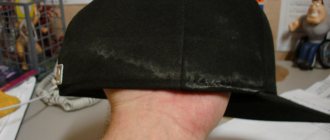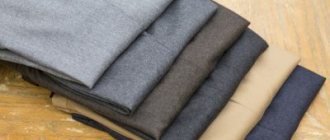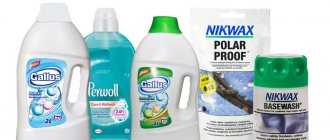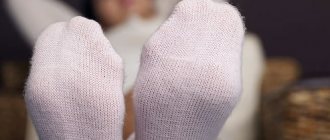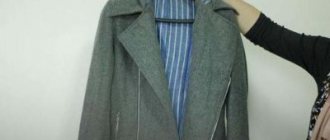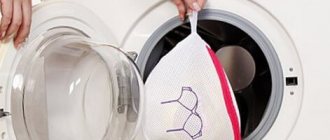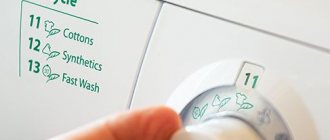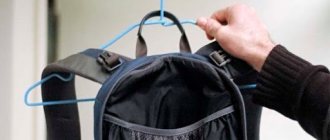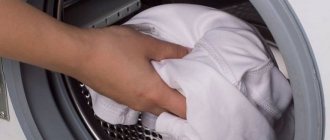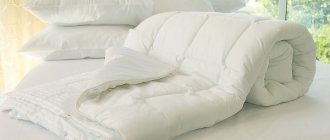How to cook nylon tights?
I put the tights in hot water and stir constantly. After a few minutes, the tights and the water will change color. We look at the color of the tights, if it suits us, we take out the tights to rinse. Cook for up to 10 minutes.
Interesting materials:
How to make numbering from the third page? How to make page numbering from the second sheet? How to make pagination numbering from the second page? How to make page numbering in landscape orientation? How to number pages in coursework? How to do pagination in Linux? How to do page numbering in open office? How to make page numbering in Word 2003 from page 3? How to number pages in Word 2007? How to number pages in Word 2010?
We return white color to gray things
There is a chance to bleach gray synthetics using regular salt.
To do this, things are soaked in warm water with added salt - 600 g is mixed in 10 liters of water - after which they need to be rinsed well and washed with powder. Another way: using soda and ammonia. 10 tablespoons of soda and 2 tablespoons of ammonia (3%) are diluted in 10 liters of warm water, the clothes are soaked for several hours (from 3 or more). After soaking, you need to wash with powder to wash out the softened particles that give the fabric a grayish tint.
If the fabric has turned gray from prolonged use or frequent careless washing, it is unlikely to be bleached. In addition, pellets form on the surface of such clothes, which also give an unkempt appearance, so “reanimating” them will still not give the expected effect.
Whitening children's tights
Stains on the clothes of young children are an everyday occurrence.
Every mother has faced an unpleasant problem, and sometimes she had to part with something that was dirty. As you know, it is undesirable to use chemical bleaches for children's clothes, so you have to look for ways to help deal with stains in other ways. How to bleach children's tights without ruining them or harming the child? Buy bleaches that will not cause harm when used in moderation:
- hydrogen peroxide;
- ammonia;
- white;
- baking soda;
- laundry soap;
- salt;
- boric acid.
The housewife probably has one of the listed products in her house. But before you start washing, you need to pay attention to the scale of contamination.
How to remove yellowness?
White items can turn yellow under the influence of many factors. Sometimes it is quite easy to restore the original whiteness at home, sometimes you have to make an effort, and there are cases when it will no longer be possible to restore the original color, for example, when synthetic fibers have entered into a chemical reaction with chlorine.
- organic particles;
- traces of perfume or cologne;
- washing in water with a high content of magnesium salts;
- use of untreated water (with rust);
- not thoroughly rinsing after washing (including if the machine’s filter is clogged);
- washing white items with colored laundry powder;
- mold.
Organic particles are traces of our body on clothing. This is not only sweat, but also dead epidermis. If you wear a white item at least once and do not wash it, and then put it in a closet for long-term storage, it will most likely turn yellow. The same thing happens if things are poorly washed after use. You can whiten such yellowness using ordinary laundry soap.
- Soak clothes in cold or slightly lukewarm water for several hours.
- Rub with laundry soap (72%) to obtain a rich, dense foam.
- Pour hot water and soak for about another hour.
- Wash and rinse thoroughly.
- Rub with soap again and repeat washing.
Poorly washed or rinsed items are more difficult to wash, and the procedure may have to be repeated several times.
Small yellow spots that appear some time after washing may well be mold. After all, mold on things can be yellow and whitish, and not just black. To deal with such stains, you can use ammonia. For these purposes, both a technical aqueous solution of ammonia (25%) and the well-known ammonia alcohol, a 10% solution, are suitable. It is used as follows:
- in 10 liters of warm water dissolve 1 tablespoon of a 25 percent solution or 4 tablespoons of three percent ammonia;
- things are soaked for several hours and then washed in the usual way;
- When washing, in addition to soap or powder, you can also add ammonia, but in a smaller proportion.
We recommend: How to properly wash clothes made with synthetic padding in a washing machine?
The same bleaching method is used if the water contains a high content of magnesium salts.
Ammonia can be added during washing for prevention. Then yellowness does not appear on the clothes.
If yellowness appears from washing in water that has not been treated with rust, in addition to ammonia, you need to add hydrogen peroxide: 200 ml per 10 liters of water. There are two more recipes that can help cope with this problem:
- soaking in sulfur-containing solutions;
- use of peroxide bleaches.
How to remove paint from shoes
Fading insoles and the inner lining of shoes quickly contaminate light-colored tights and knee socks. Effective cleaning methods help remove ugly stains:
- Stains on synthetic or woolen items are generously moistened with undiluted lemon juice. After 20 minutes, wash with powder.
- If citric acid has no effect, take a solution of hydrogen peroxide: add 4 tablespoons to 2 liters of warm water. l. pharmaceutical drug. Contaminated products are immersed in liquid for 15 minutes, then rinsed.
- Colored marks on natural cotton socks are rubbed with a mixture of equal parts of water and chlorine-containing bleach - Belizna, Domestos or a similar preparation. After 7 – 10 minutes, the composition is washed off.
To lighten stubborn streaks, prepare a stronger product: mix 2 tablespoons. l. sodium percarbonate with the same volume of dish gel and 1.5 liters of water. Sodium percarbonate contains active bleaching ingredients - hydrogen peroxide and soda ash.
Dirty socks are immersed in the foaming mixture for half an hour. Then wash by hand. This treatment will return whiteness and preserve the structure of the fibers.
Items are bleached before washing
Traditional methods of lightening
You can also bleach white children's clothes at home using “folk” remedies. These include pharmaceutical drugs and products that can be found in any kitchen. They are used individually or made into mixtures to enhance the brightening effect. What medications from your home medicine cabinet will remove yellowness and gray plaque?
- Aspirin. The drug is broken into powder and dissolved in hot water. For 1 liter of liquid you will need from 1 to 4 tablets, depending on the condition of the item. When the solution has cooled to 35°, add powder to it, put on clothes and leave for 2-6 hours.
- Potassium permanganate. Prepare a rich-colored solution in a glass of water, then filter it through cheesecloth to get rid of sediment, if any. The clarifier is poured into a filled basin (the color of the water should turn pale pink), and the products are kept in the resulting solution for half an hour.
- Boric acid. 3 tbsp. l. The drug is poured into a basin with 6 liters of water at room temperature. Children's clothes are bleached in the resulting mixture for 2-4 hours.
- 3% peroxide. 6 tbsp. l. The substances are mixed with 3 liters of water. Grayed (yellowed) wardrobe items are kept in the clarifier for half an hour. During soaking, you need to turn things over several times and make sure that they are completely immersed in water. Otherwise, unbleached areas of the fabric may remain.
No less effective and the most gentle are natural bleaches from the kitchen. They are used individually and in mixtures with detergents and medicinal substances.
- Salt. For 6 liters of water add 6 tbsp. l. substances and prepare a solution. Pre-washed items are kept in it for 3-4 hours. To enhance the bleaching effect, add 2 tbsp to the basin. l. peroxide.
- Soda. Add 12 tbsp to 6 liters of liquid. l. soda and leave the laundry in the solution for 6-8 hours.
- Lemon acid. The crystals are dissolved in hot water and the mixture is poured into a washing container (1 teaspoon of substance for each liter of liquid). Pre-washed clothes are kept in the brightener for about 1 hour.
- Low-fat milk. Typically used for children's clothing made of delicate fabrics (guipure, cambric, silk). The milk is heated to room temperature and the item is bleached in it for half an hour to 3 hours.
The treated product is rinsed twice: first in warm and then in cold water. To prevent possible contact of brightener particles with the child's skin, it is recommended to wash the items again.
Source
How to avoid bleaching
In order not to torment yourself with the question of how to wash children's tights, you need to learn how to take care of them:
- Do not place white tights in the washing machine with items of other colors, especially bright and dark shades.
- Do not wash wool, synthetic and cotton items together. Each needs to be set to a certain temperature: at a higher temperature, the tights will become deformed and fade; at a lower temperature, stains may remain.
When washing cotton and linen, add calcined salt to the washing powder (not recommended for use in automatic washing machines), this will keep it white longer. White linen requires a lot of attention. If you take proper care of it, things will look like new for a long time, and you won’t have to update your wardrobe too often.
How can you wash white socks?
Pour a liter of warm water into a basin, add a teaspoon of vinegar. Soak your socks in this solution for about an hour. Then rinse and wash the socks by hand. By the way, you can soak things in vinegar before machine washing: this will make the result more noticeable.
Interesting materials:
How to calculate a pension in Uzbekistan? How to calculate interest for the year? How to calculate interest on a loan? How to calculate fabric consumption for curtains? How to calculate the fuel consumption of a car? How to calculate growth or decline as a percentage? How to calculate the gathering for curtains? How to calculate the cost of a service example? How to calculate tulle folds? How to calculate average fuel consumption per 100 km?
Lazy solutions
To simplify and speed up cleaning, auxiliary products and lazy cleaning methods are used.
Tennis balls
Tourmaline balls, which are bought in hardware stores, come into contact with clothing when washed and “knock out” dirt. The material is cleaned gently and is not damaged. To enhance the effect, washing powder is mixed with baking soda, two or three balls are launched into the drum and the machine is turned on.
Tourmaline balls are sometimes replaced with tennis balls
Additional Information! Before the procedure, check whether the balls are moulting. The balls are kept in warm soapy water for an hour to ensure the color is strong.
Car wash
This fun express method will appeal to car owners and confirmed bachelors. Warm soapy liquid and clarifier are poured into a clean plastic bottle. Load contaminated steam. Close the container tightly, put it in the trunk and go about business.
From constant mechanical stress when the machine moves, the fibers are freed from dirt particles. After the original wash, items are rinsed in the traditional way.
Lifehacks
Life hacks for every day, as well as a review of proven and necessary products for the whole family.
How to bleach white children's tights at home
Children's white tights quickly become dirty and take on a gray tint. Is it possible to return tights to their former whiteness? Yes, of course it is possible, but for this you need to use proven methods.
From this article you will learn how to bleach children's white tights at home.
In what cases is it necessary to bleach children's tights?
If your tights have small yellow stains, you can wash them in the washing machine with added bleach. This is usually enough to get rid of simple dirt.
You can also soak the tights in warm water with added bleach (follow the instructions). After an hour, you can wash the tights in the washing machine. Whiteness easily removes many stains. If after using bleach there are still stains on the tights, then bleaching is necessary. Most often, dirt does not wash off on knees and socks. How to wash white tights in this case? Try the methods below.
How to maintain whiteness
To keep your stockings light-colored longer, you should follow these basic rules:
- hygiene is regularly monitored, underwear is worn only on clean feet;
- You should not wear the same pair for more than one day;
- in the evening, the removed items are soaked and then washed (sometimes pre-treatment with soda or soap foam eliminates the need to search for bleaching recipes);
- clean the inner lining of the shoes, check the cleanliness of the insoles;
- white socks are washed separately from other clothes;
- carefully read the label, which indicates how to care for the item: the choice of detergents depends on the composition of the fibers;
- observe the washing temperature regime, do not heat the water above +35℃.
Dry bleached socks away from the sun
Additional Information! If you regularly wash or soak tights with table salt (2 liters - 3 tablespoons), the fibers will soften and be freed from dust particles. The smell of sweat will disappear. Things will still be bright white.
